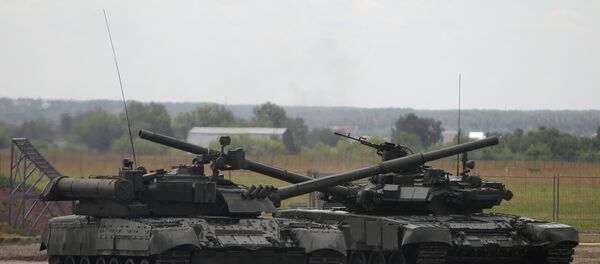Uralvagonzavod representative Oleg Zozulya did not elaborate on the engine’s details, saying only that the Armata tank featured the most powerful engine ever built for Russian tanks, which means that the engine packs at least 1,500 horsepower.
The tank’s speed is another big secret, but, judging by what they saw during the the May 9 Victory Day parade debut on Moscow’s Red Square, it could be in the ballpark of 100 kilometers an hour.
The tank crew is securely enclosed in a multi-layer armored capsule separated from the ammunition container. The vehicle is fully computerized and remote-controlled via a high-resolution video cameras that directs its movement, track targets and activates the tank's defense systems.
This frees the crew from performing routine tasks to allow it to focus on key combat functions.
"For the crew, it's like playing a video game," said Ilya Demchenko, one of the Armata's designers.
The Armata's chief designer, Andrei Terlikov, said that the new technologies built into the Armata could make it possible in the future to build a fully robotic vehicle that would operate autonomously on the battlefield.
The Armata is also equipped with a so-called active protection system, forming an outer perimeter of its defenses. When the system spots an enemy projectile, it fires a round to destroy it or knock it off its path.
The current version of the Armata is equipped with a remotely controlled standard-caliber 125-mm cannon, with fully automated loading, which can fire both regular shells and rockets.
Designers say that a much more powerful 152-mm cannon could be easily fitted to the Armata in the future.
The tank’s modular structure also allows for quick and easy modernization of its elements and systems.




